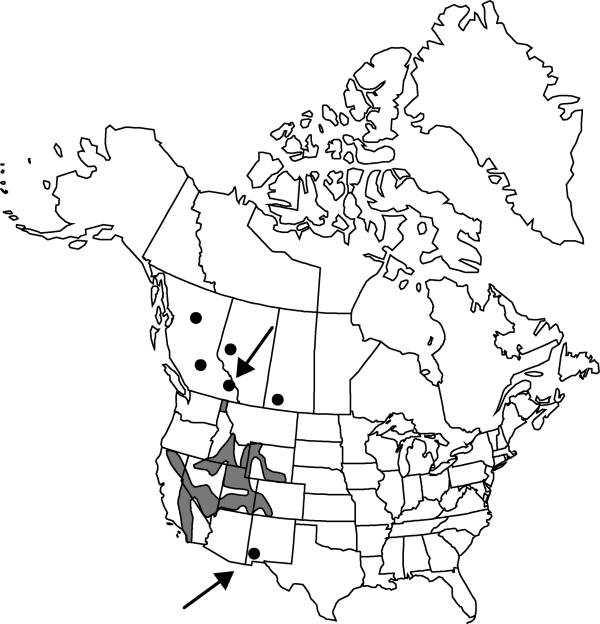Chenopodium atrovirens
Mem. New York Bot. Gard. 1: 131. 1900.
Stems erect to ascending, usually much-branched, 0.7–6.5 dm, moderately to densely farinose. Leaves nonaromatic; petiole 0.5–1.5 cm, usually markedly upward curved; blade ovate, broadly oblong, oblong, oval, or occasionally triangular, prominently 3-veined, 1–3 × 0.4–2.2 cm, 1.5–3 times longer than wide, thick, base rounded to cuneate, margins entire or occasionally with basal lobe, apex obtuse or rounded, farinose abaxially. Inflorescences glomerules in terminal and axillary paniculate spikes, 2–8 × 1–1.5 cm; glomerules maturing unevenly; bracts linear, 2 × 0.1 mm. Flowers: perianth segments 5, distinct nearly to base; lobes obovate, 0.8–0.9 × 0.6–0.8 mm, apex rounded or emarginate, carinate, farinose, not covering fruit at maturity; stamens 5; stigmas 2, 0.1 mm. Achenes or Utricles ovoid; pericarp adherent or nonadherent, smooth. Seeds 0.9–1.3 mm diam., margins acute; seed coat black, rugulate. 2n = 18.
Phenology: Fruiting mid summer–fall.
Habitat: Open dry sandy areas and other disturbed sites
Elevation: 100-3400 m
Distribution

Alta., B.C., Sask., Ariz., Calif., Colo., Idaho, Mont., Nev., N.Mex., Oreg., Utah, Wyo.
Discussion
Chenopodium atrovirens has been reported for Washington but we have seen no specimens. Reports of C. carnulosum Moquin-Tandon from Texas are, at least in part, this species. We have seen no reliable North American records of this southern South American species.
Selected References
None.
